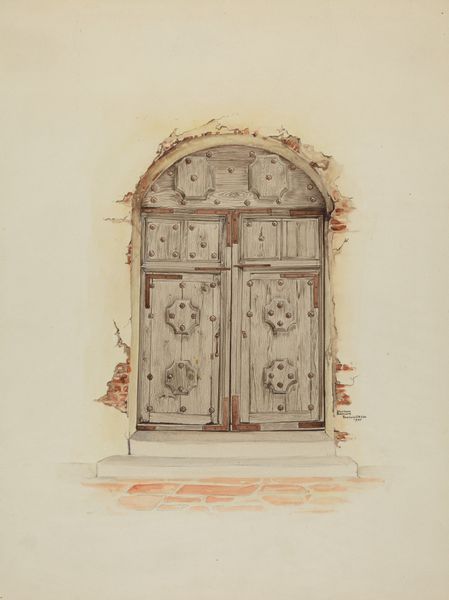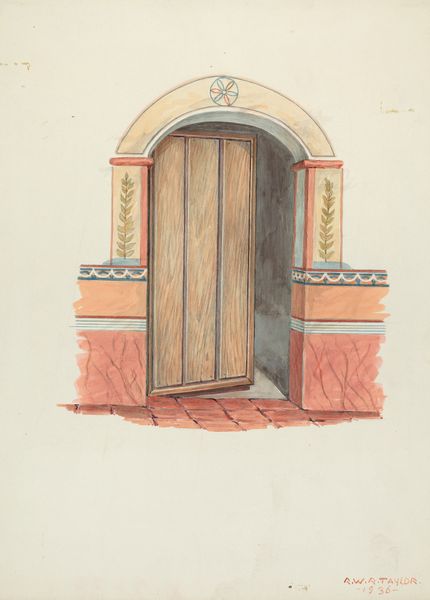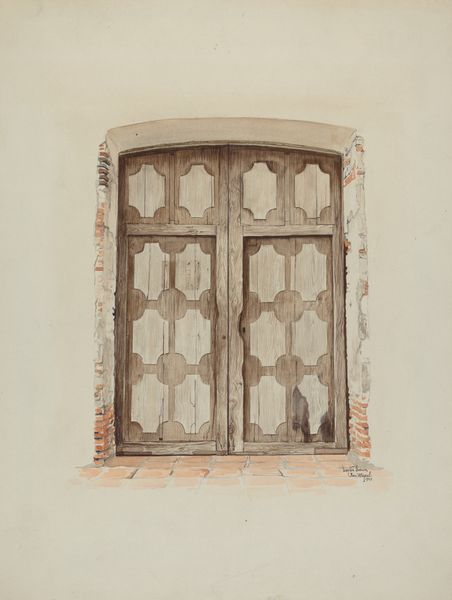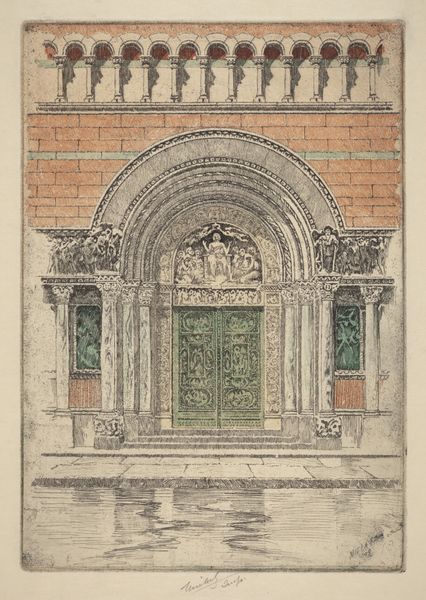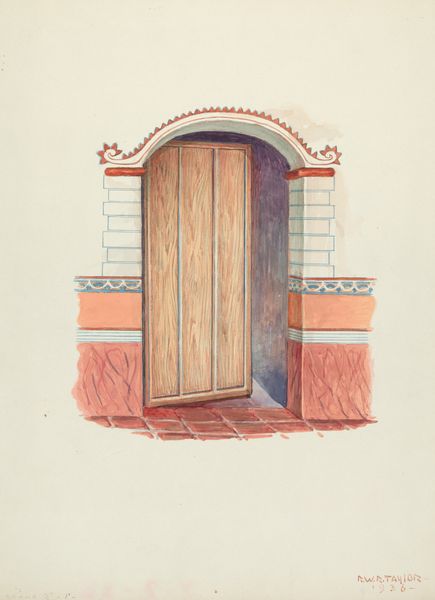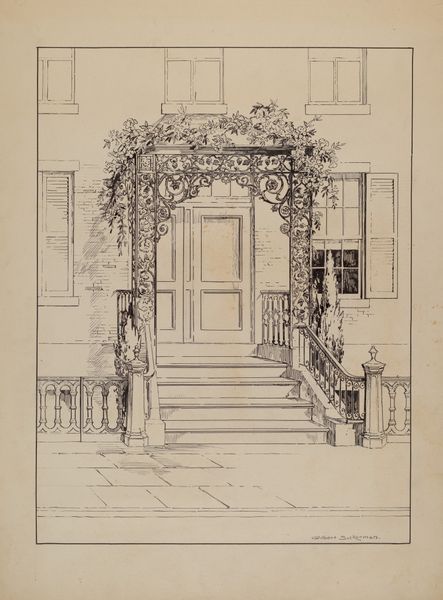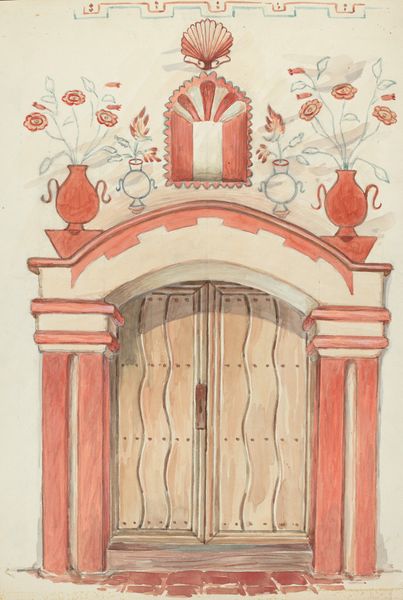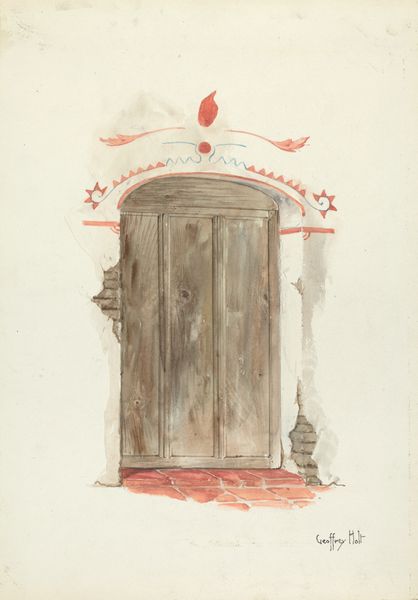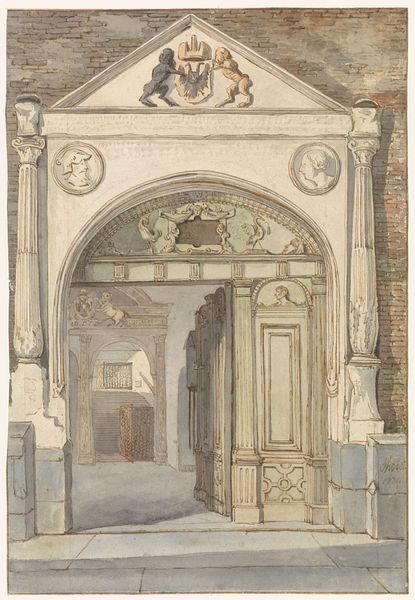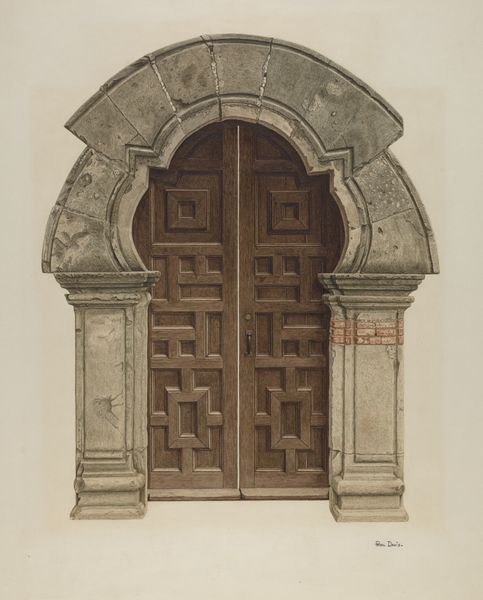
drawing, watercolor, pencil
#
drawing
#
landscape
#
watercolor
#
coloured pencil
#
pencil
#
genre-painting
#
watercolor
#
realism
Dimensions: overall: 35.5 x 26.7 cm (14 x 10 1/2 in.) Original IAD Object: Doors overall: 12'high x 8'wide
Copyright: National Gallery of Art: CC0 1.0
Editor: Here we have Juanita Donahoo’s "Doorway and Wall Painting," created around 1941, using watercolor and pencil. It strikes me as a very straightforward depiction, but there's a captivating contrast between the sturdy door and the crumbling wall around it. What captures your attention in this piece? Curator: The materiality of the decaying facade is compelling, particularly considering Donahoo's choices. She’s deliberately contrasting the permanence implied by the solid wooden doors with the tangible effects of weathering on the surrounding structure, the degradation of the material. What statement is she making about time, labor, and the endurance of the built environment versus the reality of its decay, specifically through her medium and application choices? Editor: So you are saying that even by choosing a medium like watercolor she is trying to convey the ephemerality of materials and culture? The rapid drying time and relative lightness compared to oils? Curator: Exactly! Watercolors, typically associated with sketching or preparatory studies, are used here to depict a supposedly permanent structure. She is further emphasizing the idea of temporality with a landscape-oriented composition rather than the kind of still-life often used for doors or architecture, which makes this an artwork rooted in both social observation and artistic materiality. Editor: I hadn't considered that before, this connection between the medium itself and the message about material decay. It feels like she's reminding us of the labor invested but also acknowledging its ultimate impermanence. Curator: And the use of pencil for underlying details underscores this precise observation – a craftsman-like recording of social reality. This work becomes an archive of material processes as much as an artistic statement. Now, doesn't it challenge us to consider the full life cycle of material culture and the artist's role in that cycle? Editor: Absolutely. I’ll certainly look at watercolors, and doors for that matter, in a new light now.
Comments
No comments
Be the first to comment and join the conversation on the ultimate creative platform.
